|
|||||||||||||||||||||||||||||||||||||||||||||
Citroën C6 Lignage concept car |
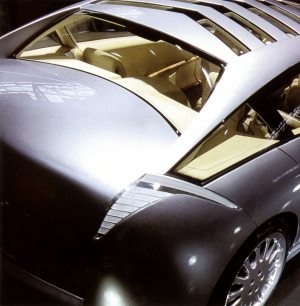 |
||||||||||||||||||||||||||||||||||||||||||||
A possible indication of what the XM replacement might look like |
|||||||||||||||||||||||||||||||||||||||||||||
| Click on the pictures for higher definition, larger pictures | |||||||||||||||||||||||||||||||||||||||||||||
 |
|||||||||||||||||||||||||||||||||||||||||||||
|
Shown at the 1999 Salon de l'Automobile in Geneva - to my mind this car is far more radical than some of the drawings purporting to represent the XM replacement although whether the "suicide doors" will make it into production is a moot point. C6 - not the rear wheel drive car built between 1928 and 1934 but Citroën’s latest concept car, exhibited at the Geneva Salon in March of this year. Another product of the Centre de Creation under the guidance of Mark Lloyd who studied automotive industrial design at the Royal College of London. He joined PSA in 1989 as a designer, being responsible for Activa 2 and Xanaé . For the last year, he has been in charge of the avance de phase or research of style and design of vehicles and the marque – brand identity if you like. The name self evidently recalls that of its predecessor which totally dominated the haut de gamme market in France with over 60,000 examples being sold and inaugurated a long line of grandes berlines including the 15CV , DS , CX and XM . C6 must live up to its predecessors in being innovative in terms of the use made of its architecture and technology in the service of well-being and safety. That Citroën should choose to exhibit such a car would appear to indicate that PSA has confidence that Citroën can and should compete in a market sector in which they have been singularly unsuccessful of late. It also demonstrates the company’s commitment to its reputation as a builder of cars that are different from the run-of-the-mill products of so many other manufacturers, including, it must be said, PSA – and this includes unadventurous cars like the Saxo and Xsara . If however the success of these vehicles has provided PSA with the financial wherewithal to build cars that can proudly display the chevrons, then I for one laud them. |
|||||||||||||||||||||||||||||||||||||||||||||
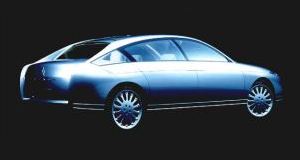 |
|||||||||||||||||||||||||||||||||||||||||||||
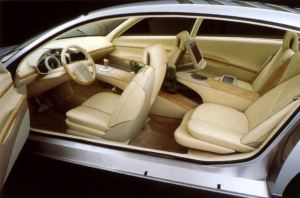 |
|||||||||||||||||||||||||||||||||||||||||||||
|
That Citroën
should choose a name from its own history is yet another
example of the sea change which has occurred of late in
Paris. Those of us who were afraid that the marque’s
identity was being diluted to the point of non-existence will
be able to sleep at night.
|
|||||||||||||||||||||||||||||||||||||||||||||
|
Until comparatively recently, PSA has seemed determined to ignore Citroën’s history and to bury its reputation as a manufacturer of avant garde vehicles. Conventionality and blandness have been the order of the day. But the motoring public has become more sophisticated and will accept the unusual, provided the price does not include unreliability. Ford, that master of lowest common denominator design has realised this and currently has a successful range that includes some of the most striking looking cars on the market. A further spin on the name is of course that this car may be seen as the big sister of C3 and like that concept car, it is undoubtedly a pointer to the sort of vehicles Citroën will be building in the next century. As with C3, C6 has “suicide” rear doors which are unlikely to make it into production although I am told that there is an American car - the name escapes me - which is so equipped. The rear doors cannot be opened unless the front door on that side is already open. Citroën has been at pains to point out that C6 is a concept car and that there are no plans to put it into production. Nevertheless, it is almost certain that the prime purpose of exposing such a design is to judge public opinion and so far, the reaction of the pundits has been favourable. Personally, I have some reservations – I intensely dislike the oversized chevrons at the rear and notwithstanding the claims made for “fluidity”, find it looks somewhat bulky and heavy. Whether a Peugeot equivalent will be built is a moot point since in a recent interview, Vincent Besson, Director of Produits-Marchés stated that of all the French marques, Citroën is the one best placed to build a car in this market sector. I also understand that C6, while it has no running gear (unlike C3), is actually built on Plate-forme 3 – the new floorpan intended for the Xantia replacement and possibly, if public reaction is favourable, for the XM replacement – the intention is apparently for relatively low volumes; as low as 3,000 per year. I also understand that Plate-forme 3 will not be used in any future Peugeot. The intention is for three floorpans to be made available for the new range – Plate-forme 1 will be C3 and Saxo replacement and Plate-forme 2 will be Xsara replacement. |
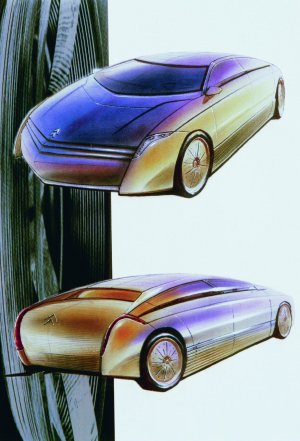 |
||||||||||||||||||||||||||||||||||||||||||||
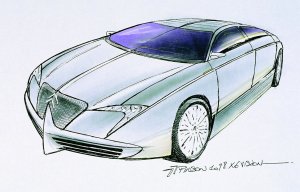 |
|||||||||||||||||||||||||||||||||||||||||||||
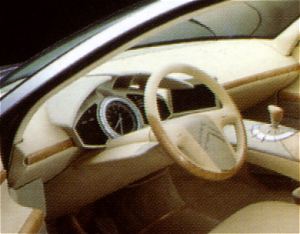 |
|||||||||||||||||||||||||||||||||||||||||||||
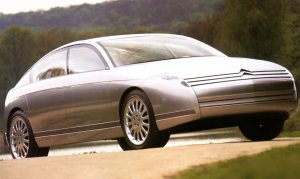 |
|||||||||||||||||||||||||||||||||||||||||||||
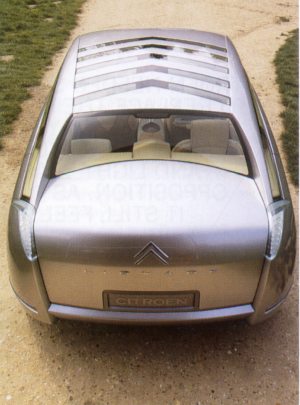 |
|||||||||||||||||||||||||||||||||||||||||||||
|
I understand that if C6 is given the green light, it could be with us in 2003. |
|||||||||||||||||||||||||||||||||||||||||||||
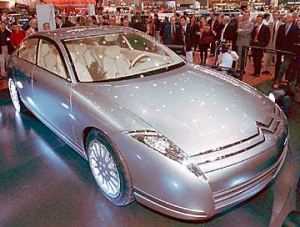 |
|||||||||||||||||||||||||||||||||||||||||||||
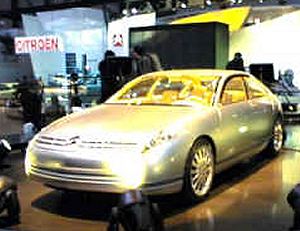 |
|||||||||||||||||||||||||||||||||||||||||||||
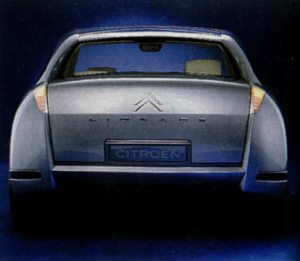 |
|||||||||||||||||||||||||||||||||||||||||||||
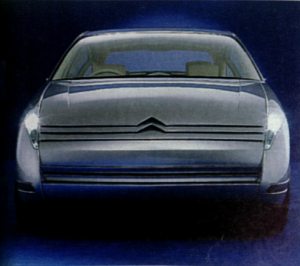 |
|||||||||||||||||||||||||||||||||||||||||||||
C6 LIGNAGE |
C6 LIGNAGE |
||||||||||||||||||||||||||||||||||||||||||||
|
The C6 Lignage concept car reaffirms Citroën’s intention to be perceived as an original and inventive marque, respecting the tradition in which it was founded, seeking to bring customers a wide choice of cars. The name C6 Lignage reflects Citroën's determination for the new car to become one of the Marque's greats. Almost 70 years ago, between 1928 and 1933, the C6 dominated the category of top-of-the-range vehicles of the period, with more than 60,000 examples sold. Many celebrities owned one. The C6 was the first in a long line of great Citroën saloons. C6 Lignage has adopted the motto of its illustrious ancestor: make intelligent innovations in architecture and technology, while promoting well-being and safety. With the exploratory concept of C6 Lignage, Citroën sets out an original approach to a top-of-the range vehicle for the future. C6 Lignage illustrates an ambition of considerable importance to the Marque: to refuse compromise and to combine different sources of inspiration. C6 Lignage expresses a new approach to ongoing efforts to combine exceptional roadholding with the art on-board living. An enlightened application of the Marque's architectural principles, C6 Lignage is dedicated to wide open spaces. A touring vehicle, C6 Lignage is designed to cover long distances. Inside the vehicle, men and women travel in comfort and safety, enjoying the well-being offered by their surroundings. The purpose of the C6 Lignage is immediately perceptible to the onlooker, expressed through its proportions and style. With its subtle, fluid lines, it appears poised for action. The profile reflects efforts to optimise aerodynamics. The long front overhang (1.09 m) and short rear express, movement, strength and latent power. Set apart from the roof pillars, the boot blends in with the overall fluidity of the design lines. The interior space of C6 Lignage is more than generous, as indicated by the 3 metre wheelbase. Space is considered to be essential to on-board well-being. The four occupants have individual seats, which can be adjusted to enjoy all the options of life on board. The interior of the C6 Lignage is luxurious. High-quality materials, such as leather and wood in attractive, matching shades, create a warm and relaxing atmosphere. The pure airy forms of the front and rear central consoles reinforce the friendly atmosphere of the interior, while providing individual space for each occupant. Passengers in the rear are not forgotten. Relaxing in their comfortable seats, they can watch television, see a film, hook up to their office computer, log onto the Internet or simply read or sleep. The functionalities offered by the XM Multimédia (presented at the Paris Motor Show) give an idea of the possibilities offered by the C6 Lignage. The time and thought given to the aerodynamics, perceptible in the smallest detail, serve to reduce fuel consumption and thus pollutant emissions. For example, conventional rearview mirrors are replaced by cameras, the windscreen wipers are streamlined and the radiator grille will have mobile fins, managed electronically according to vehicle speed. C6 Lignage is dedicated to one main idea:
well-being. Its generous forms reflect its strength, an
expression of an exceptional vehicle. Main technical characteristics
Exterior dimensions (mm) Overall length: 4,920 Tyres: Michelin PAX System (vertically anchored tyres) Focal areas of development:
|
Le concept C6 Lignage illustre le désir d'être aperçu comme une marque originale, inventive, dans la grande tradition fondatrice de son identité, et qui déploie sa vitalité pour offrir à ses clients des automobiles différentes. Son nom, C6 Lignage, traduit la volonté de Citroën
de l'inscrire dans la tradition des grandes Citroën. De 1928 à
1933, il y a près de 70 ans, la C6 domina la catégorie des Avec C6 Lignage, concept exploratoire, Citroën propose une approche inédite de la voiture de haut de gamme d'après-demain. C6 Lignage illustre la volonté chère à la Marque de refuser le compromis pour cultiver l'art de la synthèse. Conçu par le Centre de Création Citroën, C6 Lignage exprime
toute la capacité de renouveau et de créativité de la Marque.
C6 Lignage renouvelle et prolonge la recherche Application éclairée des principes architecturaux de la
Marque, C6 Lignage est tout entière vouée aux grands
espaces. Grande routière, C6 Lignage a pour vocation
de C6 Lignage promet également un espace intérieur plus que généreux avec son empattement de 3 mètres. L'espace ressort comme une composante essentielle du bien-être à bord. Cette abondance profite aux quatre occupants qui disposeront de sièges individuels offrant des possibilités de réglage pour toutes les fonctions de la vie à bord. A l'intérieur du C6 Lignage le luxe est omniprésent. Les matériaux nobles comme le cuir et le bois dans des harmonies claires créent une ambiance chaleureuse et reposante. Les consoles centrales avant et arrière aux formes pures et aériennes renforcent le climat convivial tout en réservant un espace individualisé pour chaque occupant. Les passagers arrière ne sont pas oubliés, ils pourront, en
toute liberté et dans un confort idéal, regarder la
télévision, visionner un film, se connecter à leur ordinateur
de bureau, accéder à Internet ou tout simplement, lire ou
dormir. Les fonctionnalités offertes par la XM Multimédia
(présentée au Mondial de Paris) préfigurent les possibilités
de C6 La recherche aérodynamique perceptible dans les moindres
détails contribue elle aussi à réduire la consommat ion et
donc les émissions polluantes. Ainsi, les rétroviseurs
conventionnels sont remplacés par des caméras, les
essuie-vitres seront carénés et la calandre disposera de lames
mobiles gérées électroniquement en fonction de la vitesse. Principales caractéristiques techniques Dimensions extérieures (mm) Longueur hors tout : 4 920 Pneumatiques : Michelin PAX System (Pneus à accrochage vertical) Axes de développement :
|
||||||||||||||||||||||||||||||||||||||||||||
| ©
Julian Marsh/Citroënët 1999 |
|||||||||||||||||||||||||||||||||||||||||||||

